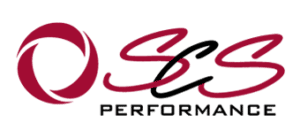The Financial Shopping List: Essential Items for Business Success
With countless finance products in the market – which one should I take? This is an FAQ from most businesses at some point, so this simple shopping list should take some pain out of the process.
To start, it’s not so much a case of which product you should take, it’s more a question of which one do you need and realistically, what is available.
Finance facilities should match the need, otherwise you run the risk of additional cost or inappropriate terms (which normally winds up being even more cost).
Step 1 – what is the need? Short term needs such as funding trading stock, day to day purchasing or debtors, will typically require an overdraft or business credit card facility. Purchasing a larger asset such as equipment, land or even a business, will require a longer term debt product such as a fully drawn advance, term loan, bill line or instalment loan.
Tip: do not fund long term assets on Overdrafts – they cost more and you will interfere with your normal working cash cycle.
Step 2 – check out the features. With overdrafts and credit cards, both will give you short term cash coverage, but they are very different in the way they operate. Understanding how you want to use the product will assist in deciding which one to go for. Similarly with term funding options, consider how the funding will be used – will it be in one payment, several spread over 3-6 months or aligned to specific date etc. These differences are important and will need to be considered during the loan application phase.
Tip: pay particular attention to the early exit clauses on term loans to avoid any fee shock.
Step 3 – secured by? Depending on your credit history, financial position and the loan amount, unless your funding need is small – it will likely require some form of security. For the bulk of small to medium businesses this means a mortgage over a property, potentially a charge on the business assets and a guarantee from the business owners. With security, check out the costs to put it in place, the different interest rates for the different classes of security and most importantly, your level of personal liability.
Tip: only sign guarantee documents for your business – and only then, with legal advice. Avoid giving guarantees for anyone else.
Step 4 – interest fixed or variable? As a general rule, working capital facilities such as overdrafts and credit cards are all on variable rates – with the rate moving in line with movements in the market. With term loans you have the choice of variable or fixed interest options. Both options have their benefits and pitfalls. The key here is to understand the pros and cons of each and make a fully informed decision as to what’s best for you – right now. I have used both types extensively over the years, and generally have a preference for a blend of both in a client’s funding package – but it will always come down to the individual client’s circumstances.
Tip: make the best decision you can NOW and resist the temptation to second guess “what could have been” down the track.
Step 5 – interest only or repayment? More aimed at the term loans, but can also apply to some credit card facilities as well. Interest only options are kinder to cashflow, but they essentially preserve the debt for repayment on another day. Equally, a loan with a principle and interest repayment can put a lot of pressure on a business’s cashflow. Don’t think that you must take one or the other, look at your cashflow and see what is possible. Take into account seasonal impacts and always leave a bit extra for a buffer. Review the terms and conditions carefully to ensure you know the cost of making “extra” payments if you can – or the consequences of missing one!
Tip: always be careful to preserve a healthy cashflow – BUT remember…. repaying debt now means that you have more options later if something goes wrong.
A couple of other more specialist funding items worthy of consideration;
Trade finance – generally used for overseas (trade) deals, with the term aligned to the shipment/delivery of the goods or the expected sale time-frame. This can also be funded in a foreign currency.
Invoice finance – funding extended against the value of your debtors. You provide the invoiced value of the debtor to the Bank/Financier and you get a large % of its face value now – which you then repay when you collect the debtor. This essentially “brings forward” the debtor value in your cashflow and is an excellent product for growing businesses with good debtor books – albeit they can be a little labour intensive.
Leasing – a specific loan facility which is secured by the equipment it funds. Many cars are funded on leases, as are larger items of equipment. Always make sure that the lease term reflects the usable life (and worth) of the asset.
A good banker will be able to prescribe the correct suite of loan products for your needs – but remember – you are the one paying them back. So make sure you understand the detail, be kind to your cashflow and always leave some room to move things around later on.












